Driving the Copper Canyon
City in Mexico
The copper canyon
Copper Canyon is Mexico’s answer to the Grand Canyon. A group of six essential canyons in the Sierra Madre in the Mexican state of Chihuahua, the Copper Canyon system is known locally as Barranca del Cobre. Six rivers formed the canyons that are popular among hikers, campers, and nature lovers from all over the world. Biking and horseback riding are also popular pastimes. Its ancient landscape and majestic sites make it an extraordinary place to visit and set up camp.
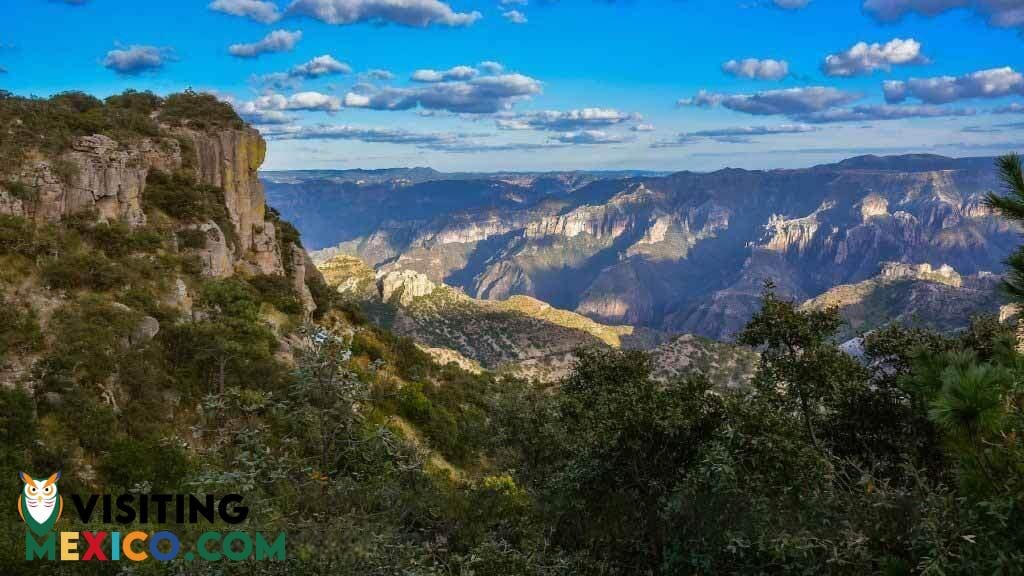
While there are six main canyons, there are also many smaller ones that form a group of about twenty. The walls of the canyons are copper and green and extraordinary to behold. There is a wide array of flora and fauna throughout the landscape. Rich biodiversity greets explorers. There are waterfalls, hot springs, and plenty of rugged terrains to explore. Indigenous cultures still make their home around the canyons, but the camping experience is generally less touristy than one would find at the Grand Canyon. In fact, if you combine the main canyons’ area, they are far larger than the Grand Canyon—four times larger!
Driving the copper canyon
Driving the Copper Canyon is on almost everyone’s Bucket List – even those who aren’t Mexico aficionados. Motorcyclists consider it the greatest ride in Mexico. RV’ers are seduced by photos of caravans with RV’s on flatcars while the owners view the scenery and sip Margaritas in the bar car. Spiritually-minded people find meditating on the edge of a thousand-foot cliff drop most fulfilling. Though the area economy revolves around lumber which competes with natural beauty and tourism, the two coexist. The towns are small and do not have that feeling of being hustled or of being a walking dollar sign that you get in some other tourist destinations. Perhaps it is the spirit of the Tarahumara, the natives who live here. They are shy, quiet and have a live and let live attitude. Most writers compare it to the Grand Canyon in Arizona because the Barranca del Cobre is longer and deeper. That’s where the comparison ends. Each is a unique place and each should be appreciated for what it is. One pleasant difference is that even on the most tourist-full day, you will have more elbow room than in AZ. Walk the boardwalk streets and soak in the feeling that you’ve entered a time warp.
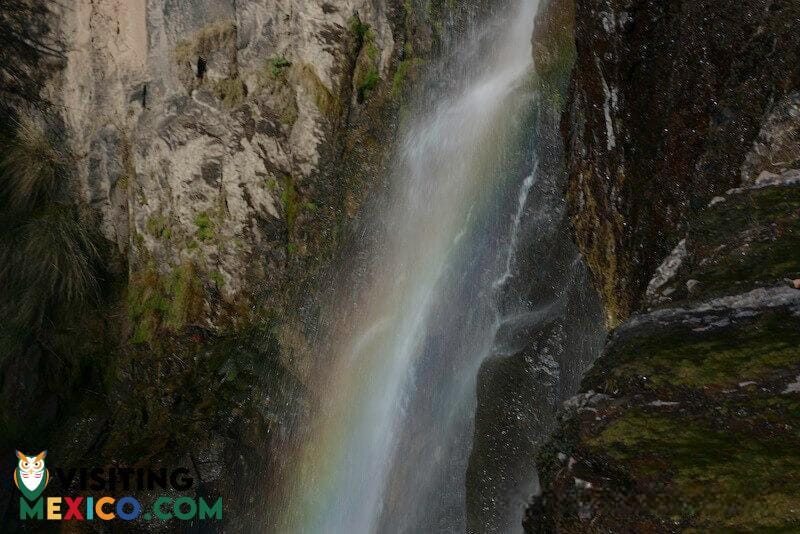
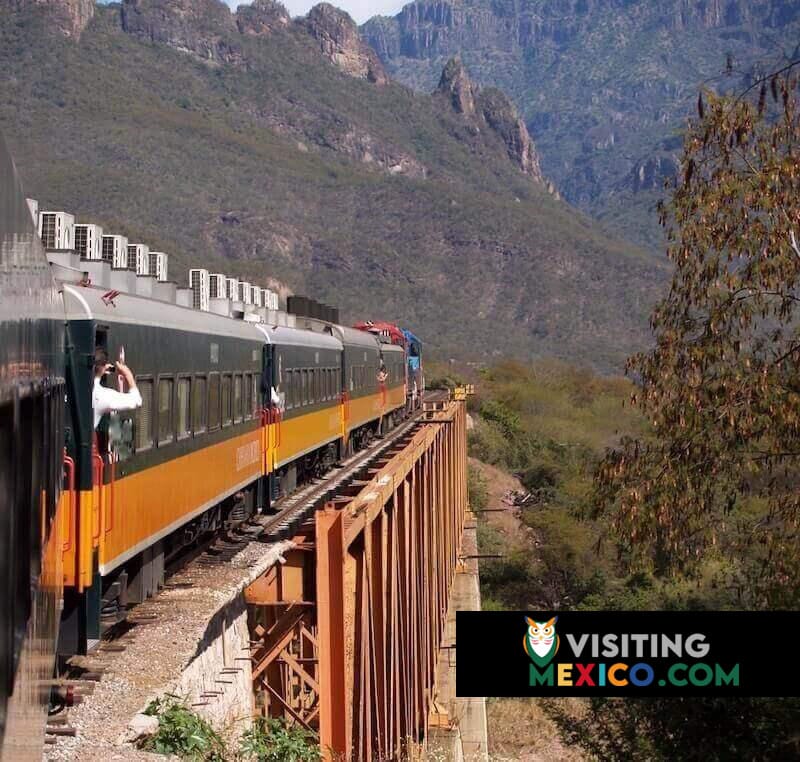
The Train
To visit the Barrancas del Cobra, or Copper Canyon by Train is the best way to see this natural wonder. The Sierra Tarahumara of Chihuahua, where you’ll see one of the largest and deepest canyons in the world, is known as Barrancas del Cobre (Copper Canyon) and it’s one of Mexico’s most awe-inspiring regions.
To visit this area of Raramuri Indian culture, it is recommended that you climb aboard the Chihuahua-Pacifico train (Copper Canyon Train), commonly referred to as CHEPE. The route begins in Ojinaga and the train makes stops in the cities of Chihuahua and Chauhtemoc, where you’ll see various Mennonite colonies.
The trail continues along with the Sierra de Creel, a mountain range that lies 2,400 meters (7,920 feet) above sea level. It then runs past the Divisadero station and descends through canyons, tunnels, and ravines that border the edges of the majestic Copper Canyon and the Tararecua and Urique canyons. Along the route, the trail crosses 37 bridges and goes through 86 tunnels before arriving at Los Mochis, in the state of Sinaloa.
The train was the dream of Albert Kinsey Owen who established a Utopian colony in Topolobampo, SIN. In 1885. Owen’s practical dream to help finance the colony, called Pacific City, was to build a railroad from Galveston, TX to Topolobampo. Alas, Owen was something of a dictator (not a good thing for a Utopian Socialist) and most of the colonists called it quits by 1893. The railroad was started and stopped several times up to the Mexican Revolution and completed by the Mexican government in 1961.
Because most articles about the Copper Canyon are written by non-drivers, you might think the train is the only way to see this magnificent wild area. Or, if you are an RV’er, you may have been seduced by images of rigs tied onto flatcars while the owners are sipping martinis in the club car.
Having driven much of the canyon and taken the train several times, I offer another opinion. As drivers, we can have the best of both worlds.
You can drive your car or rig to Creel, safely leave it there and catch the train. Conversely, if you are on the Pacific Coast, you can drive to El Fuerte and leave your vehicle safely at a hotel.

El Chepe – Senior and Junior
The train, El Chepe, is famous for its meandering route, doubling back on itself like a snake eating its tail. It makes the once impossible trip from Chihuahua, Chihuahua to Los Mochis, Sinaloa a nine to twelve-hour surprisingly smooth ride. An engineering marvel, grades are gradual and none exceed 2,5%. The whole trip is 405 Miles, 653 KM.
There are now two El Chepes – Chepe Express (luxury) and Chepe Regional (standard and economy). The Express runs only from Creel to Los Mochis and vice-versa. It has a short roundtrip from Creel to Divisadero on Saturdays. Unlike the Regional, which stops at several whistlestop towns on the way, it graces only Creel, Divisadero, Bahuichivo, El Fuerte and Los Mochis with its lumbering presence.
Although travel writers uniformly scribble that the best way to experience the Canyon is to take the train from El Fuerte (an hour or so up the trail from Los Mochis, SIN.). Having ridden the train from both ends, I can see their point, though it is not as relevant to those of us who combine driving and training.
The flatland from Los Mochis, past El Fuerte to the Chihuahua state line is boring. An hour or so before Bahuichivo, it gets interesting.
At the end of March, the Chepe Regional will no longer run as a tourist train. It will be converted to a commuter train for residents of the area, just like the Express train. Whether a tourist will be able to buy a ticket on the Regional in the future is up in the air. Go to the official website before getting your hopes up. The two trains run in opposite directions on opposing days (except Saturdays), so a little planning is a necessity.
At the moment, due to Covid 19, the Express train is not running. The Regional is, but only for locals. When this will be over is anyone’s guess.
For schedules and to purchase tickets, see https://www.chepe.mx/.
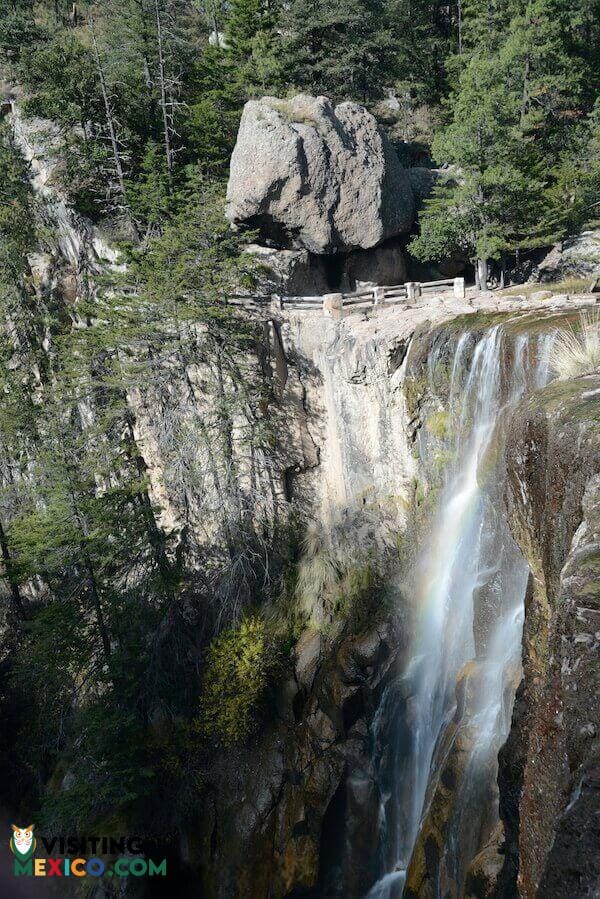
Driving the Copper Canyon – Creel
Creel is the logical start to exploring the Copper Canyon by vehicle. It is easy to get to from Chihuahua. You will go to this capital city of the state by the same name whether you come from the north (El Paso, TX or Columbus, NM), or the south (Durango, Torreon). The drive is a mix of four-lane near the city and two-lane in the country.
Here is a short road log from Cd. Cuauhtémoc.
- 68.0 Come to Cd. Cuauhtémoc.
- Cd. Cuauhtémoc is a dusty, busy burg. Traffic sucks but there is only one way in and one way out of town. Eat here because you are a distance from a decent meal.
- 29 miles more and you come to La Junta. There is GAS here. Fill up. Turn LEFT for Creel. Road is 2-lane and moderately curvy, but RV’s have been driving it for decades.
- 43 Come to village of San Juanito.
- 54 Through Bocoyna and then Sisoguichi. There are waterfalls here.
- 58 Come to Creel. The town is over the RR Tracks to your left. For RV’s keep driving until you see either the road from town crossing the tracks or a GAS on left. There is a more RV friendly entrance there.
Nothing is hard to find in Creel. Most hotels are on or 1 block off, Ave. Lopez Mateos.
Hotel Villa Mexicana and RV Park
The only RV park in the Canyon is in Creel. 73 total RV sites, can accommodate any size RV, and full hookups. U.S. Tel: 1-888-610 2095 I called them and they are still open both as a hotel and trailer park for the 2020-2021 season. Hotel prices UPPER. Very nice.
The Lodge, Best Western at Creel Hotel & Spa
This is one of my favorite hotels in Mexico. Built “frontier-style” with wooden floors, walkways, and walls it is surprisingly quiet. The restaurant is very good, reasonable. Jacuzzi brand hot tub with great jets, dry sauna, steam bath. Good massages on request at reasonable prices. I’ve been staying here since the 1980s and the names have changed but not the quality. Same manager too. A little pricey, but worth it.
Copper Canyon Sierra Lodge
At the junction of the road to Cascada Cuasare. Isolated. Romantic. UPPER.
Hotel Los Pinos
Hotel Cascada Inn
2 story classic motel -style, inexpensive. On Lopez Mateos right before jct. out of town. Good. VALUE.
2 story nice. MOD.
What To Do Around Creel
In a short article like this, I can only scratch the surface of what to do. Allow three days in Creel and go with the flow. Guides are a necessity if you plan to adventure beyond the well-known tourist attractions. Trips to Batopilas should not be attempted alone.
Attractions
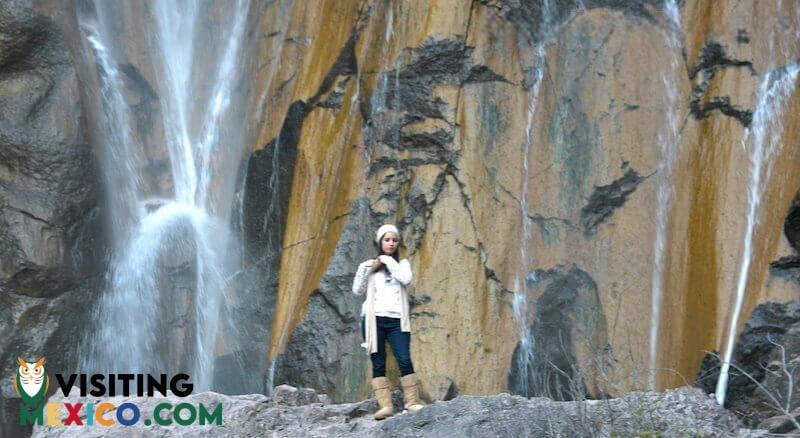
The Waterfalls of Copper Canyon
Cascada de Cusare, (Place of the Eagles) in Raramuri is a pleasant surprise. Ten and a half miles from Creel, it is the most accessible of the waterfalls in the area (there are even flat miradors where a wheelchair could negotiate). It’s a short fall, with a drop of only ninety-eight feet or thirty meters. Every time you see it, it is different. Many different rivulets can triple the width of the drop during the rainy season (May-Aug). This photo was taken in late November or early December, so sometimes later works too. There were no crowds of either Mexican or international tourists. Christmas week is supposed to be crazy.
For the fit, there is a well-marked and maintained trail with more than two hundred wide steps and handrails. When you get to the bottom, you’re rewarded with a unique view looking up at the falls. The cascading threads look like snakes winding and bouncing their way to the bottom. Be extra careful. The river bottom is a collection of irregular rocks and boulders, all of which are slippery. I fell from a boulder and hurt myself a little. Worse yet, I cracked a lens on one of my Nikons and damaged the others. It is all worth the effort. When you’re ready to leave, trust me, allow three times as much time coming back up.
Cascada Rukiraso & Arekowata Hot Springs – Six miles (10 KM) south of Creel, just past the strange rock formations of Las Ranas. The springs are mediocre warm. The waterfall is a multi-drop (7?), but inaccessible. You can view it from the top after a short hike.
Cascada y Parque Nacional Basaseachi – Mexico’s second-highest falls have a drop of 246 meters (807 feet). World height ranking is 226. It is a plunge fall where Arroyo del Durazno and Arroyo de Basaseachic come together and make one drop. Cascada Piedra Bolada nearby is slightly taller and accessible only by a strenuous hike.
It is quite a distance from Creel, (66 miles) so you’d have to be a waterfall lover to make the trip. The picture of the tall, lonely, magnificent fall is of Cascada Basaseachi. Four miles before you reach the junction with MEX-16, on your left is a treasure – Cabañas San Lorenzo Basaseachi. The cabins are in a national park (pay a small entrance fee) with a very good lookout where you can see the falls in totality, even though they are miles away. The cabins are for rent with two bedrooms. There is either no or very little electricity and a fireplace for warmth or cooking. The great lodge has Internet, a restaurant and companionship and cats. Be sure to bang on your vehicle hood in the morning as cats love sleeping under the hoods. They have no phone that I know. There is plenty of tent camping available and busloads of polite students show up occasionally. The owners told me an RV could dry camp there.
If they are full, the best other accommodations are beyond the burg of Basaseachi. A couple of miles west of town, on the left, is a brand-new motel-style hotel. It was quite nice. There is little traffic on the highway so it will still be quiet. There is a hotel/hellhole in town if all else fails. Just be careful of the bare wires on the heaters and be sure you know how to get the manager when needed. You will need him for something, I am sure.
Natural Phenomena Copper Canyon
Las Ranas – huge boulders in the shape of frogs or toads. Some take imagination to see and some are plain as day. Eerie.
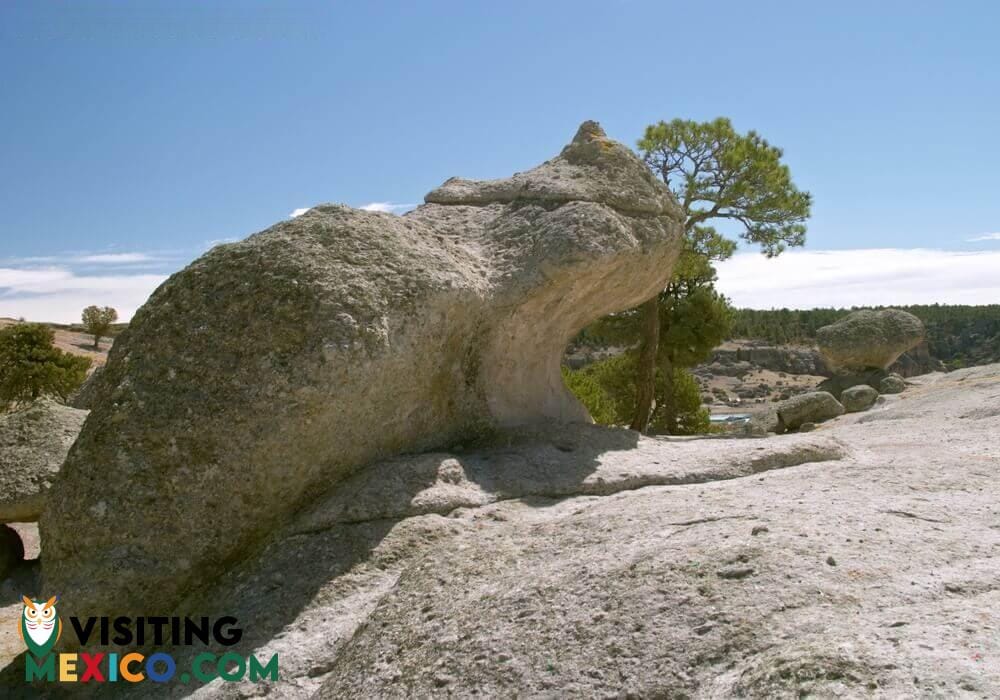
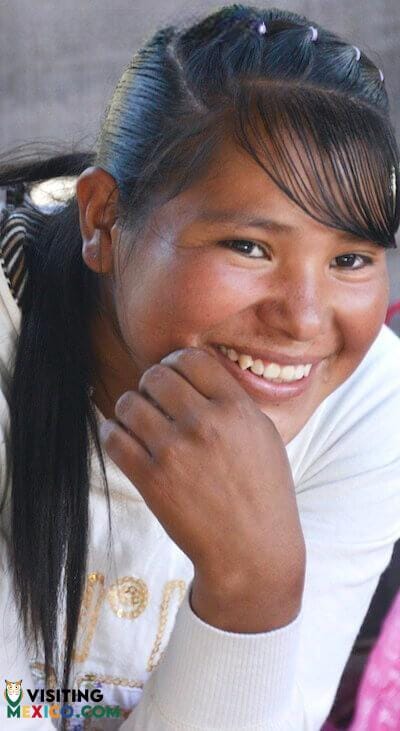
Recohuata Hot Spring – a mixed bag. It would be more appropriate to call them Warm Springs. The water is not hot for a real hot springs junkie (35 degrees Celsius / 95 degrees Fahrenheit). The location is scenic, with three pools set among the forests and mountains. Getting there is easy enough. BUT once you park, there is a very, very steep walk to the pools. This could be 45 minutes to an hour and the rocks could be slippery. The alternative is to hire a ride in a decrepit, 4×4 vehicle for roughly USD$4 to $8. It’s a scary ride. There are changing rooms and a snack bar with intermittent hours.
Lake Arareco – a large mountain lake at its best. Spend a picnic here.
Handicrafts Museum – near the town square and train station. Tarahumara arts and crafts. You can see the best here.
The Tarahumara people – are just wonderful. Except for a few vendors, they are shy and polite. They are not camera shy either.
Worst times to drive Copper Canyon – July, August, Easter, Christmas.
Resources – https://chepe.mx/ This is the official El Chepe website and you can buy tickets here (in a convoluted way) and check schedules.
BTW those iconic but common shots of the bluffs overhanging the canyon or ziplines come from Divisadero, 25 miles / 40 KM SW of Creel on a very curvy road. There are a couple of hotels there, more expensive than in Creel, but the views make them worthwhile.
Legacy mexico trip guide – one of the originals – circa 1988 Bill Fitzgerald
This story is here because it is a good story. It was written in the late 1980’s or early ’90’s. So, as a guide it would be a suggestion. And in the 2020’s this area is a cartel stronghold. I would not recommend traveling it other than by armchair. Mike.
Many thanks to Bill Fitzgerald for the story below. I have always wanted to do this trip but never got to it. He is the first person to tell us what it was like.
Camping the copper canyon
While campers that want to rough it can sleep under the stars throughout the area, there are dedicated campgrounds in both the towns of Creel and Urique. Regulars to the area recommend asking a rancher or farmer for permission to camp on their land for a small fee. While the area, of course, boasts luxury lodging and simple travel lodges, it offers many fine spots for camp. Of course, safety is important, especially if you enter into the more remote and rugged areas of the canyons. Traveling with a guide into these remote regions is strongly recommended, particularly if you have never camped in the canyons before. Otherwise, campers love to find spots near one of the canyon’s lakes or near a particularly beautiful vista.
A tent and plenty of water and food are essential for your trip. Even in the dedicated campgrounds, you’ll want to zip up so that lurking lizards or snakes don’t wander into your tent as you sleep. Sunscreen is also essential for your camping holiday; however, if you visit during the cold season, you can easily expect snow or sleet in the upper mountainous regions.
More information on copper canyon
Most people enter the canyon system from the town of Creel. Creel is a great place for base camp as it is near Tarahumara villages and near to forests and canyon exploration. Creel is also a great place to find a guide and they have various restaurants if you decide to cook your own supper in the wilds. One of the most popular ways to explore the area is by train; the Ferrocarril Chihuahua al Pacifico rolls along the main canyon and allows for some spectacular views. You can also enhance your trip to Copper Canyon by reading up on the history and culture of the area as well as the flora and fauna you can expect to see.
There are quite a few options for tours and accommodations in Copper Canyon. If you search google for Copper Canyon Tours or Copper Canyon accommodations you will find options that suit your needs. They seem a bit pricey, but it might be worth it. The alternative is to drive down yourself and go camping. If you drive down make sure to get proper insurance. MexInsurance® has been around since 2003 and they have a great program online with the best rates I’ve seen and all the big US companies use them. They offer Chubb, Mapfre and Qualitas and the website is typically better than anybody else.
From Hidalgo westward the paved road goes to Guadalupe y Calvos, then on dirt to Badiraguato, then on pavement to Culiacan. Between Guadalupe y Calvos (current end of pavement on the east), and Badiraguato (end of pavement on the west), it is just pioneering from village to village asking directions (in the village and from every passing car, which are not many) to the next village. The roads were all dirt, but they had been washed out in places. You could cross these places, but it was very rough — really bumping slowly over boulder fields. There were deep ruts in the road, but they were made in the wet season, and at this time — the dry season, there was a track through the ruts. I found the grades or clearances were never more than a two wheel drive high clearance vehicle could pull, because that type of vehicle (about a one ton, flat bed, two wheel drive truck) is what is used to haul goods into the villages, but the grades were very long, both up and down. The roads went over big ridge after big ridge, and braided and twisted, with not a vestige of signage, and directions were vague (go beyond the village and take the tracks to the south) or (the road is “muy limpio” that is, very clean).
Don’t need no stinking map.
The maps were accurate as to villages and river drainages, but none of the maps (and I had the latest INEGA maps) was accurate as to the presence of the roads we were on. The local people knew the road well to the next little town, but their directions beyond that were unreliable. The grades up and down over several ridge systems were extended. I actually
boiled (partially vaporized) the brake fluid on the front disc brakes when they got very hot, and the brakes were spongy after that. The way we took, there was a largeish river to ford. I waded it first to make sure it never got to deep, and piled rocks on the other side to aim for. The crossing was about 80 to 100 yards. I was only grateful (about 4 times an hour) that it was the dry season.
This is the area where drugs are produced, and there were some odd things. In the bottom of one valley there was a large (four engine) old piston passenger plane sitting on the valley floor, not far from the road. It had gotten in, but had not gotten out. Chickens now roosted in it’s shade, and the engines had been stripped. There were some very large paved
airstrips you could see out on the mountain ridges, that were behind long roads that ended in barred gates. In this remote central portion of the passage, there were long stretches of road with nothing along the road, though roads branched off to what appeared to be ranches, away at remote spots. The people were gracious as they always are, and we pulled through
though it took us about a day and a half of constant driving. We were told either that it was impossible or that it was simple. Neither was true.
The sequence of villages, from memory after Guadalupe y Calvos was (1) Delores, (2) San Jose de los Llanos. This stretch took a full day of driving, and the last village (San Jose) did not have a hotel, and we were put up by the generosity of the lady store owner. The next day we went from San Jose de los LLanos to Santiago de los Caballeros and then on to Badiraguato, where we hit pavement, and we were in Culiacan a few hours later.
You had remarked that you had heard there was a large canyon to cross. There is a dirt road marked on the INEGE map, that leaves the pavement before (east of) Guadalupe y Calvos and goes to the south of the route we took and it does appear to cross a large canyon, dropping about 2500 meters of elevation in about 14 miles. Eventually this road leads to other roads that, at least on the map goes to Culiacan. We did not do this road.
You have been helpful and patient with my other travel requests, and I hope this information helps your understanding of this region.
Please post the news about Route 2 between Parral and Culiacan on your website for others to use. I felt like an explorer on that trip. Since then I have not gotten out on any other adventures.The roads were so bad the old suburban (my faithful auto) vibrated when it got back onto pavement, and I had to get new rims, and a few front end parts to straighten the ones that got bent, and some new drive shaft parts and so on. — Bill Fitzgerald.


